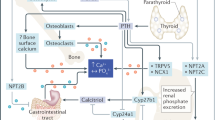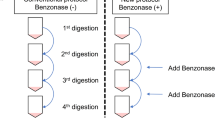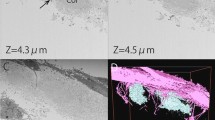Abstract
LONG bones of premature children given tetracycline in therapeutically high dosages have shown up to 40 per cent growth inhibition during 2–4 weeks of treatment1. This effect was reversible, and approximately 2 weeks after the last administration of tetracycline the growth rate returned to normal. It is well known that large doses of tetracycline depress overall growth of chick embryos and mice2, but in other studies when therapeutic doses of tetracycline were given to rats and humans, growth inhibition was not observed3,4. It seemed probable that growth inhibition was dose dependent and that perhaps growth inhibiting concentrations of tetracycline could be reached in premature human infants, and so we decided to determine whether tetracycline would inhibit long bone growth in an organ culture system and, if so, at what concentration of tetracycline in the medium the inhibition occurred. The method developed by Proffit and Ackerman5, which evaluates growth of bone by measuring uptake of tritiated thymidine and of 14C proline from the culture medium, was used. Separate experiments indicated that, although there was some uptake of calcium-45 into bone spicules, there was no calcification of cartilage in this system. This culture method is similar to that used by Saxén6–8, who observed effects of tetracycline on calcification of immature bone in vitro but did not describe an effect on growth.
This is a preview of subscription content, access via your institution
Access options
Subscribe to this journal
Receive 51 print issues and online access
$199.00 per year
only $3.90 per issue
Buy this article
- Purchase on Springer Link
- Instant access to full article PDF
Prices may be subject to local taxes which are calculated during checkout
Similar content being viewed by others
References
Cohlan, S. Q., Bevelander, G., and Tiamsic, T., Amer. J. Dis. Child., 105, 453 (1963).
Bevelander, G., Adv. Oral Biol., 1, 205 (1964).
Chu, E., O'Hara, A. E., and Keitel, H. G., Antimicrob. Agents Chemother., 3, 753 (1963).
Likins, R. C., and Pakis, G. A., Nature, 203, 1069 (1964).
Proffit, W. R., and Ackerman, J. L., Science, 145, 932 (1964).
Saxén, L., Science, 149, 870 (1965).
Saxén, L., Science, 153, 1384 (1966).
Saxén, L., J. Exp. Zool., 162, 269 (1966).
DuBuy, H. G., and Showacre, J. L., Science, 133, 196 (1961).
Lindgren, I., Acta Pathol. et Microbiol. Scandinav., 65, 528 (1965).
Lock, F. L., Laskin, D. M., and Engel, M. B., J. Pharm. and Exp. Therap., 141, 131 (1963).
Finland, M., Hirsch, H. A., and Kunin, C. M., Antibiot. Ann., 7, 375 (1959–60).
Author information
Authors and Affiliations
Rights and permissions
About this article
Cite this article
BENNETT, I., PROFFIT, W. & NORTON, L. Determination of Growth Inhibitory Concentrations of Tetracycline for Bone in Organ Culture. Nature 216, 176–177 (1967). https://doi.org/10.1038/216176a0
Received:
Issue Date:
DOI: https://doi.org/10.1038/216176a0
Comments
By submitting a comment you agree to abide by our Terms and Community Guidelines. If you find something abusive or that does not comply with our terms or guidelines please flag it as inappropriate.



